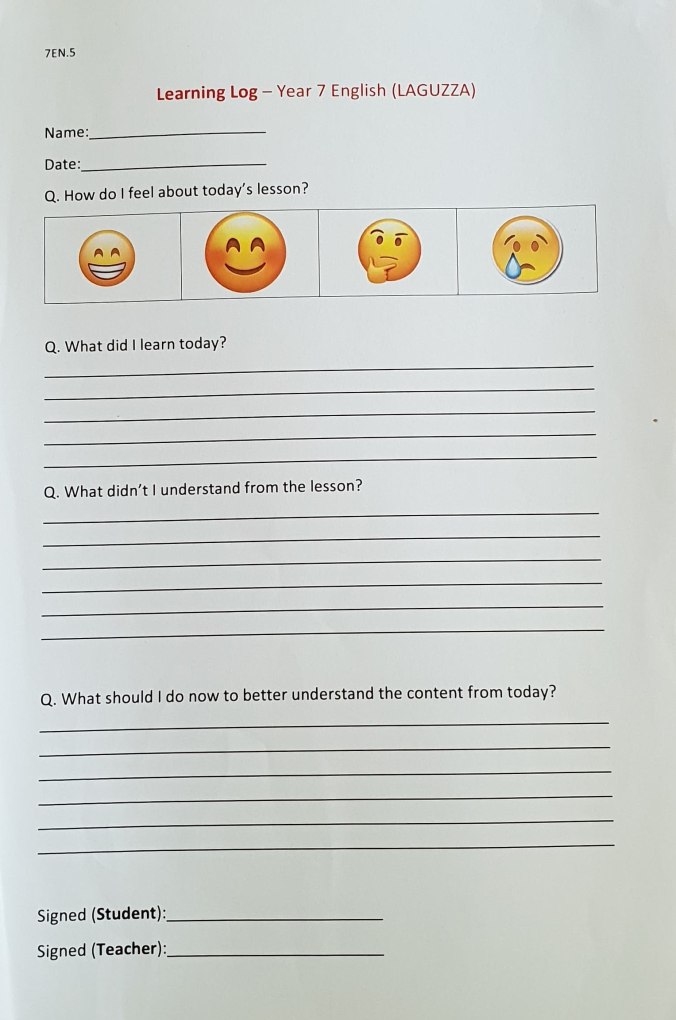Possibly the most difficult aspect of teaching is gauging students understanding of the course content on a day to day basis as students may simply say they understand content to avoid embarrassment. Ensuring that students understand the content covered grants the teacher the power to either increase or decrease the workload, as well as modifying it to each students needs. Having a written record of students understanding is one way of overcoming this difficulty. While on placement, my supervising teacher and I developed a form which would be filled out in the final 5 minutes of class and handed to either of us before students were allowed to leave the classroom (see image below). I found this form to be an extremely useful tool while on my placement as well as one I can implement in my own classrooms. The form has several components which allow for students to reflect on their learning on deeper levels. These components also provide the teacher with useful information regarding the lesson itself and content covered. By using emojis as a representation of students attitude towards the lesson, it eliminates any apprehension they may have in critiquing their teacher, yet gives a clear indication of how the student approached the lesson. By then having students record at least one thing they learnt in the lesson, they are able to see their achievements during the lesson. The visual of what they learnt can aid in increasing self efficacy, a major contributor to student motivation and performance (Bandura, 1982). What I find is the most useful section of this form is the final question, where students are asked to assess what they can do to better understand content. By incorporating this section, we have ensured that the students build their critical reflection skills. This is paramount as students must be able to critically reflect on their own work and understand where they have gone wrong + how they can improve. In order to improve this already excellent resource, I propose implementing a question on what they enjoyed about the lesson, focussing on activities rather than the content covered. This then provides me with the ability to alter my lessons in a way that suits the students and ensures their constant engagement with the lesson. 
Bandura, A. (1982). Self-efficacy mechanism in human agency. American Psychologist. V. 37. L22-I47.